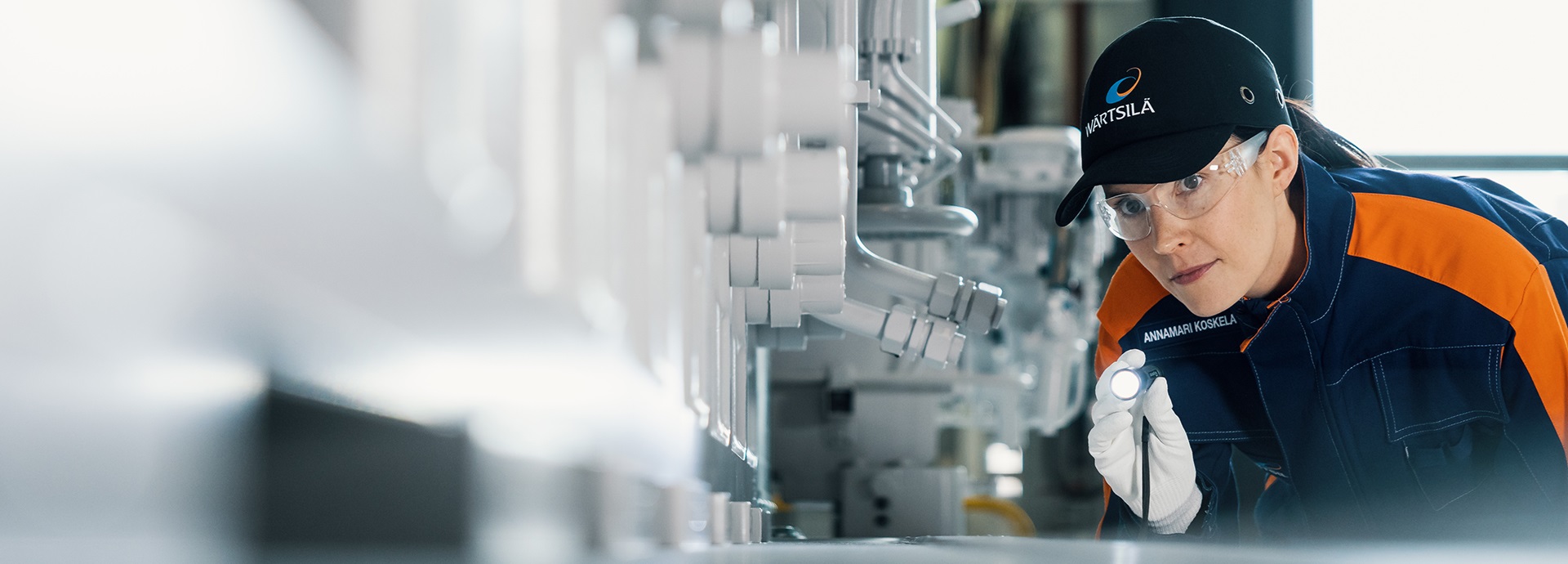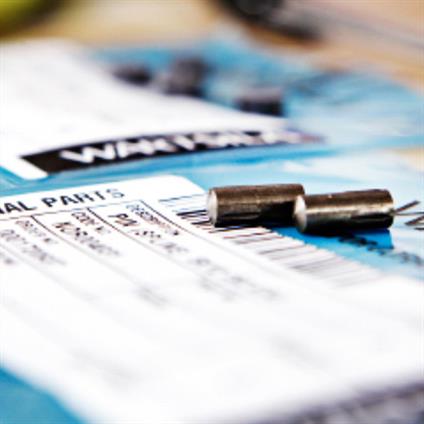

Reliable operations are key for ship owners and operators. Genuine, high-quality spare parts play a critical role in delivering reliability. But buying spare parts is made more difficult by the many misconceptions about genuine spare parts. To help you get it right, here are seven truths about genuine OEM parts – meaning genuine parts supplied by the equipment manufacturer – some of which may come as a surprise to you.
- Not all manufacturers are OEMs
- Not all parts labelled as OEM parts are genuine
- Quality is not guaranteed to be the same
- Parts made by the same component manufacturer may not be the same
- Non-OEM parts could affect your vessel’s compliance
- OEM parts are not necessarily more expensive
- Not all suppliers or dealers are authorised re-sellers
1. Not all manufacturers are OEMs
Many people think that all manufacturers (including component manufacturers) are OEMs, but this is not true.
Reality: An OEM is generally perceived as a company that designs and manufactures engines and spare parts for those engines. A component manufacturer on the other hand is a company that manufactures components that will be used by OEMs or other manufacturers to build their products. The term OEM is often used in a misleading way, which causes confusion for ship owners and operators.
2. Not all parts labelled as OEM parts are genuine
It is wrong to think that a part labelled as an OEM part is always the genuine article.
Reality: Non-OEM products are everywhere. They can look genuine, and the marketing tactics used by dealers or suppliers can be misleading, which makes it difficult for ship owners and operators to determine if a product is genuine or not. Many spare parts are marketed as genuine or original OEM parts by including the equipment manufacturer’s name, but in reality, they may not be sourced from the builder of the equipment.
To make it easier for customers, OEMs such as Wärtsilä often include a logo on genuine parts. For parts that contribute to an engine’s emissions, Wärtsilä also includes a unique IMO ID number. These act as a quick and easy reference for genuineness and compliance with the EIAPP certification requirements and IMO regulations. But if you ever have doubts about whether a part is genuine, always contact the equipment builder.
3. Quality is not guaranteed to be the same
Many believe that non-OEM and OEM parts are of equal quality, but this is not always the case.
Reality: Ship owners and operators need to ensure everything runs smoothly, and high-quality spare parts play a key role in this. But what makes a high-quality spare part? OEM parts will perform as designed in your engine, whereas there is no guarantee of success when using non-OEM parts.
OEM parts are thoroughly checked and tested to comply with internationally recognised quality standards and relevant regulations. They are also made of high-quality materials according to the correct design specifications and tolerances to ensure proper fit and performance. Strict quality management also ensures that all OEM parts can be delivered with a full warranty.
Handpicked related content:
To learn more about why using OEM parts is a good idea, download the white paper: "Why genuine spare parts are the best choice for your vessel – 5+1 great reasons".
4. Parts made by the same component manufacturer may not be the same as OEM parts
Many think that if a component manufacturer makes parts for an OEM and the same part as a non-branded alternative, they must be identical. But this may not be the case.
Reality: Non-OEM parts made by the same component manufacturer as genuine OEM parts may look the same and seem like an attractive option. But, as with everything, there is far more to consider than meets the eye when buying spare parts. While non-OEM parts may look the same as genuine OEM parts, it is short sighted to assume that they will be of the same quality.
OEMs such as Wärtsilä keep their component part specifications confidential and share only necessary information with suppliers under a confidentiality agreement. Even if a non-OEM somehow got hold of the specs, they may not have the latest ones. What’s more, they may not adhere to the same manufacturing or quality assurance processes as the OEM. The end result could be a part that wears prematurely or, worse, results in damage to the engine in which it is installed. For example, abrasive foreign particles from a low-quality part could get into the fuel or lubricating oil system, and potentially damage your engine.
Reputable OEMs such as Wärtsilä monitors and tests the quality of parts to ensure they meet the specifications and perform according to the design criteria. OEMs who follow this kind of stringent process can identify systemic quality or design problems with specific parts and implement corrective actions if needed.
5. Non-OEM parts could affect your vessel's compliance.
Many think that non-OEM parts will have no effect on vessel compliance, but they could have.
Reality: Maintaining and upgrading your vessel with quality spare parts is essential for optimal performance and safety. Every owner and operator in the marine sector is also accountable for their engines being emission-compliant after repair or maintenance.
Using a non-OEM part could mean your engine is not compliant according to the IMO compliance process set up by an OEM, such as Wärtsilä. This can lead to potential fines, lost business and damage to your reputation.
With an OEM part you have the equipment builder’s warranty that the part will perform as designed in your engine, whereas there is no guarantee of success when using non-OEM parts. OEM parts are also IMO compliant. Where necessary, an OEM will test emission-critical parts in specialised laboratories to ensure they comply with major quality standards and applicable regulations aimed at reducing emissions from shipping. This means they eliminate the risk of non-compliance. They may also be less prone to premature wear or deterioration.
To make it easier for customers, OEMs such as Wärtsilä include a unique IMO ID number on emission-critical spare parts. This ID number acts as a quick and easy reference for compliance with the EIAPP certification requirements and IMO regulations.
6. OEM parts are not necessarily more expensive.
One would be wrong thinking that non-OEM spare parts are always cheaper than genuine OEM parts.
Reality: Many ship owners and operators typically focus on short-term cost savings, ignoring the potential long-term cost of a non-OEM part. This has led to them incorrectly assuming that non-OEM spare parts are cheaper than genuine OEM parts. While non-OEM spare parts may seem a cost-effective solution, using them can lead to expensive repairs, costly downtime and revenue loss in the long run. Added together, these costs far exceed the price of OEM spare parts.
Using original spare parts can also lead to fuel savings that more than compensate for any extra costs. According to a report by the World Shipping Council, fuel can account for 50–60% of your vessel’s operating costs. A cost-efficient spare parts agreement with your original engine manufacturer can also offer considerable savings and reduce the overall lifecycle cost of your equipment.
7. Not all suppliers or dealers are authorised re-sellers.
One might think that if the supplier uses the OEM’s name and logo in their communications, then it’s OK to trust the supplier – but one could be wrong.
Reality: Some suppliers or dealers may claim that they’re authorised resellers of OEM parts, but that is not always the case. This is very misleading and confusing for buyers because when suppliers or dealers use the OEM’s name and logo in their communications it implies that they have a commercial connection with the OEM. Everything may not be what it seems at first sight.
But how can you tell if a parts supplier or dealer is an official or authorised reseller? If you’re unsure, give the OEM a call and ask. To make it easier for customers, Wärtsilä original spare parts are often marked with the Wärtsilä logo.
Genuine spare parts – the best choice
At first glance, non-OEM spare parts may seem like a cost-effective solution. But genuine, high-quality original equipment manufacturer (OEM) parts offer value that goes far beyond their initial cost. They will perform as designed in your engine and they are built to last, which means they can save you money in the long run.
To learn more, download this white paper: "Why genuine spare parts are the best choice for your vessel – 5+1 great reasons".
Related solutions
Did you like this? Subscribe to Insights updates!
Once every six weeks, you will get the top picks – the latest and the greatest pieces – from this Insights channel by email.




